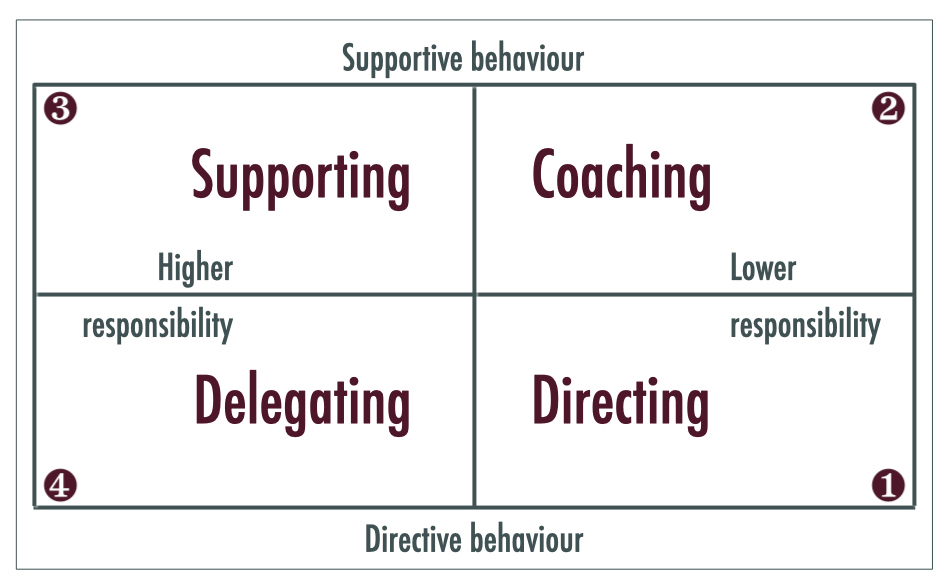Leadership Styles is our ELLC theme for this month, and I couldn’t help thinking what an interesting term it is. Is a leadership “style” just a matter of personal choice and preference, rather like our clothing style may depend on our choice to follow current fashion trends or not? Or is our leadership “style” influenced by completely different factors that may or may not be a matter of choice?
Recently I was teaching in a missions school and we were considering half a dozen factors that can contribute to conflict within a team. One of those factors was our different personalities and how they can sometimes clash. Another factor was our different expectations of leadership style. A quick Google search for “leadership styles” usually comes up with a variety of different adjectives – like directive, consultative, authoritarian, democratic, controlling, delegating… and many others.
I couldn’t help thinking how much these two factors overlap. The way that we first begin to exercise leadership is probably influenced quite strongly by our natural personality tendencies, as well as by what we’ve observed and experienced in the lives of other leaders we have known. But the way we continue to lead, the behaviours that will combine to make up our personal leadership “style,” are going to be much more about our values and the choices that those values prompt us to make.
I remember chatting with someone in a training school I was leading. I asked her what ministry projects her team would be involved in when she got back to her base. “I’ve no idea,” she said, “The leader hasn’t told us. Perhaps he hasn’t decided yet.” To this day, I can remember the inner sense of shock that I felt on hearing this. Reflecting on it later, I realised it was because my personal leadership style was strongly based on hearing from God together and making ministry decisions as a team. It had never occurred to me that one leader might simply make all the decisions and tell the rest of the team what they were going to be doing over the next eight months. And I realised too that my own choice of “style” was because of the values I held: the strong value I placed on shared leadership and on everyone being able to hear and obey God’s voice together.
Of course, there might be situations where a more directive leadership style is appropriate… when you’re dealing with an emergency, for example, or when you’re working with 800 children who need to be given clear instructions about where to go or what to do. But as we mature in our leadership, we should increasingly be able to develop versatility and adapt our leadership style to fit different situations and different kinds of people that we’re leading.
This is especially true of how we honour, develop and release the younger or less experienced staff and leaders that we work with. Even within the same team, we may need to offer a different kind of leadership to the different team members – depending on factors like their age, their skills and their past experience. A young person who is brand new in your team, who’s not too sure what’s going on and who hasn’t had time to learn many practical skills yet, will need a completely different level of support and leadership than someone who has been around for three years and already has quite a bit of ministry experience behind them.

Quite some time ago, an author named Ken Blanchard identified four “quadrants” that we can move through as we give leadership to a person who is steadily growing in experience, skills and confidence. The four quadrants or leadership “styles” are typically known as Directing, Coaching, Supporting and Delegating. Let’s unpack them a bit, as they may mean something quite different from what comes to your mind when you read those words.
When a new person joins your team, they’re going to be looking to leadership for direction and guidance. The quadrant on the bottom right is called “directing” – which simply means that a good leader will give that person more instructions about what to do and how to do it. This will give security to the new person, as they discover how things are done and take their first steps in contributing to the work of the team. They will learn by observing the more experienced team members, but also by being given clear guidance about how to do their part. At this stage in a person’s development, having a “directive” leader is not something bossy or controlling; it’s something helpful and confidence-giving.
As the new person grows in skills and experience, it’s good for their leader to move into more of a mentoring and coaching mode. This is the quadrant on the top right. Rather like a sports coach helping team players to try out new skills and then evaluate their performance, their strengths and weaknesses, a coaching leadership style will give people lots of support, but will also release and trust the team member to step out and do the new things they’ve been learning. It might often involve doing ministry tasks together, working in partnership. You’ll see that the two quadrants on the right give a lower level of responsibility to the mentoree. At this stage, it’s vitally important that the leader is there to celebrate their successes but also to help them deal well with any mistakes or failures, so that they aren’t crushed by them.
I smile when I remember a comment made by a young Zimbabwean I was mentoring. “I like this mentoring business,” he said. “If I do things well, I get the credit, but if I mess things up, Barbara is there to take the blame.” It’s perhaps not a completely accurate caricature of how things work at the stage where a coaching style of leadership is needed, but it’s a good reminder that the top two quadrants are where the leader’s behaviour emphasises giving support, so that the younger leader can step out without fear and can steadily grow in confidence.
The third quadrant, on the top left, is actually called the “supporting” leadership style. In this phase of the mentoree’s growth, his/her leader still needs to give lots of support, but the younger or newer person is increasingly taking on more and more responsibility. They may be more involved in the decision making and planning of a project; they will carry more of the weight of making things happen, and may often be doing things when the leader is not actually present, but they know that their leader is there to give support, counsel, prayer and feedback.
The fourth and final quadrant, on the bottom left, is “delegating,” and this is where the team member has the greatest level of responsibility. The leader doesn’t need to give so much input and guidance to this person and is able to delegate whole tasks or projects for the mentoree to lead and manage confidently in their own way. This doesn’t mean that the leader is completely out of the picture; they may still be around a lot of the time, and will make themself available to help or advise when needed, but the mentoree has grown to the point where he can confidently exercise leadership in his own right.
The level of support that a team member needs in the supporting and delegating phases will also be influenced by their personality type. Some people look for more encouragement and reassurance, while other, more independent personality types often like to be left to do things in their own way, without feeling that someone is peering over their shoulder all the time. Good situational leadership involves discerning the level of support or input that a team member actually needs(which might sometimes not be the same as what he wants or thinks he needs) and helping that person to transition smoothly to taking on leadership roles and being the one who begins to mentor others.
Our own personality as a leader has an influence too. Some personality types find it more natural to “tell” people what to do, and might be inclined to make the mistake of catapulting someone from quadrant one to quadrant four, dropping them in at the deep end and leaving them to sink or swim. Other personality types more naturally tend towards the coaching and supportive behaviours in the top two quadrants; their challenge will be not to “suffocate” the team member by hovering over them and not sufficiently releasing them to step out and do things for themselves, so that they discover how God Himself is always there to support and carry them.
Good situational leadership is when we are able to adapt our style, not only depending on the context, but also depending on the needs and growing maturity of those we are leading. Some gifted and confident team members may be able to move very quickly through the four quadrants, while other people may need to spend a bit more time in any one of the phases. Good situational leadership involves discerning (and dialoguing) so that we are able to give our team members the kind of leadership they really need in order to grow in confidence and be securely released in doing the will of God.



